Samuel Latham Mitchell’s conversations with the returning explorers enabled their discoveries to be shared with the scientific community.
The true impact of the scientific discoveries of the Lewis and Clark Expedition has been a source of much debate. Viewpoints vary widely among scholars, historians, and enthusiasts. Analysis of this issue will continue, and new information and historical evidence regarding the extent of the propagation of Lewis and Clark’s findings continues to be researched.
We may never know the full historical impact of Lewis and Clark’s discoveries upon nineteenth-century scientific inquiry, but one example highlights how just a series of conversations with the returning explorers allowed a significant earth science discovery to be revealed to the scientific community, a discovery that began with that fascinating passage through the geological landscape of northeastern Nebraska.
Samuel Latham Mitchill
Samuel Latham Mitchill was a physician, naturalist, university lecturer on botany, zoology, and mineralogy. During the time period when Meriwether Lewis returned from the expedition, Mitchill was also a Senator from New York State (1804-1809).[2]Alan David Aberbach, In Search of an American Identity: Samuel Latham Mitchill, Jeffersonian Nationalist, (New York: Peter Lang, 1988), 225. Contemporaries describe him as almost a living encyclopedia of knowledge. During his tenure in Washington (he also served in the House of Representatives between 1801-1804 and 1810-1813), Jefferson described him as the “Congressional Dictionary.”[3]Samuel L. Mitchill, “Dr. Mitchill’s Letters from Washington: 1801-1813,” Harper’s New Monthly Magazine, 58 (April 1879), 740.
Mitchill appears to have had ready access to the President’s House, and knew Lewis before the Expedition departed. He probably spoke to the explorer a great deal about the scientific objectives of the enterprise.
Conversations with Lewis
An indication of how intensely interested Mitchill was in the scientific outcome of the expedition is also shown by the fact that he met with Lewis on 30 December 1806, only two days after Lewis returned to Washington.[4]Samuel L. Mitchell to Catherine Mitchill, 30 December 1806, Museum of the City of New York, folder 41.321.464. Due to Museum library renovations, Mitchill’s original correspondence was … Continue reading The following week, in anticipation of another meeting with Lewis, Mitchill composed a letter to his wife Catherine recounting one of the salient topics that he and Lewis had discussed previously. Mitchill, one of the nation’s leading naturalists, could not contain his enthusiasm about one specific geological region.
In a late conversation I had with him he gave me a description of the burning plains up the Missouri . . . . I never understood their meaning until now. You see now that the minerals called volcanic are not necessarily the production of volcanoes, but of plains burning underground. Such are the curious processes of Nature, and so wonderfully diversified are her works![5]Mitchill, “Letters from Washington,” 750.
Although it is likely that Lewis was also referring to the lignite beds in present-day North Dakota in addition to the first pseudo-volcanoes the expedition encountered in northeastern Nebraska, the dissemination of this important geological finding could not have been made more quickly or to a better proponent. Mitchill soon published it and other consequential expedition discoveries in the early 1807 issue of the Medical Repository, America’s first medical journal, which he co-founded in 1797.[6]The Medical Repository was an eclectic journal that also published information and accounts of geographic explorations and scientific phenomena (along with a dash of “believe it or not” … Continue reading
On the subject of the burning bluffs and the mineral collection made on the expedition, Mitchill summarized his conversations with Lewis quite succinctly:
He has made as large a collection of these [minerals] as he could . . . they serve to enlarge our knowledge of the earths, metals and other fossils of those extensive tracts . . . . . It is curious how nature works: in Europe, lava, slag and pumice are the products of burning mountains or volcanos; but in some of the countries through which the Missouri passes there are vast burning plains, where all the volcanic productions are formed by the intensity of fire, without the smallest appearance of a mountain.[7]Samuel Latham Mitchill, “Lewis and Clarke’s Journey Across the Continent of North-America, from the Potowmack to the Columbia River,” Medical Repository, Vol. 4, Second Hexade, No. … Continue reading
Seven years in advance of the publication of the two-volume History of the Expedition under the Command of Captains Lewis and Clark (known as the Biddle’s History edition[8]Nicholas Biddle and Paul Allen, eds., History of the Expedition Under the Command of Captains Lewis and Clark, to the sources of the Missouri, thence across the Rocky Mountains and down the River … Continue reading), Samuel L. Mitchill promptly introduced some of Lewis and Clark’s most important geological discoveries into the scientific literature, positively influencing subsequent inquiry and exploration into the true nature of northeastern Nebraska’s intriguing exposures of “blue earth,” “clift of white,” and “burning bluffs.”[9]Further discussion of how the captains’ geological discoveries influenced subsequent scientific inquiry into the earth sciences in the nineteenth century can be found in John W. Jengo, … Continue reading
Related Pages
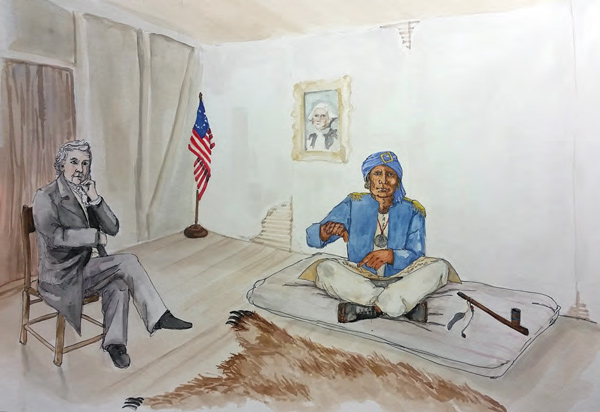
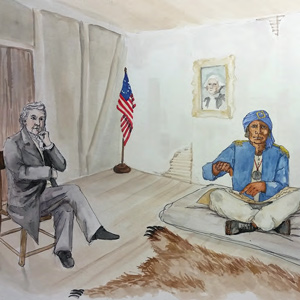
This Arikara leader rode upriver with the expedition in the weeks that followed to negotiate a peace settlement with the Mandan. In the spring of 1805 he went down river with the barge to St. Louis. After a series of delays, he went to Washington, DC, to meet with President Jefferson.


Rafinesque took a scientific interest in the plants and animals mentioned by Lewis and Clark. In addition to the six species of conifers, he also established the scientific name for the prairie dog, the white-footed mouse and the mule deer.
Early Bighorn Specimens
by Joseph A. Mussulman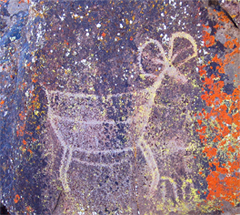

In 1800 a Scottish explorer shot several specimens in the Canadian Rockies and brought back hides, heads and horns for study by American and British zoologists, including Dr. George Kearsley Shaw of the British Museum, whose study was published in 1804.
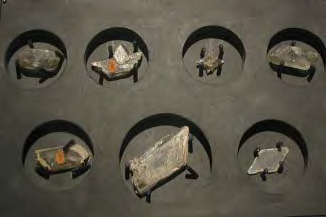

Although not nearly as celebrated as their botanical and zoological work, Lewis and Clark collected a multitude of mineralogical specimens throughout the expedition.
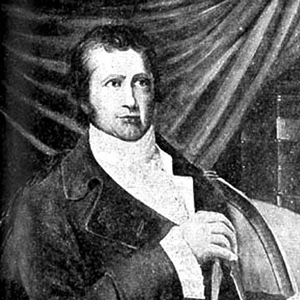

The life and times of these three explorers intertwined in a number of odd and interesting ways, often brought together by far-reaching hand of Thomas Jefferson. Tracing these connections opens a window onto every conceivable aspect of the period.
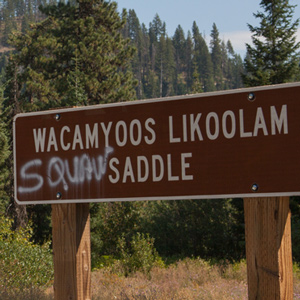

Both of the captains referred to Charbonneau’s young wife as a squaw, usually spelling it with a post-vocalic /r/—”Squar.” In the 1980s a nationwide movement arose to extirpate squaw from general use, because of its worst connotations.
Notes
| ↑1 | Conclusion to John W. Jengo, “‘Blue Earth,’ ‘Clift of White’ and ‘Burning Bluffs’,” We Proceeded On, Volume 37, No. 1 (February 2011), the quarterly journal of the Lewis and Clark Trail Heritage Foundation. The other portion of Jengo’s article is on this site at NE Nebraska Minerals. The original printed article is provided at https://lewisandclark.org/wpo/pdf/vol37no1.pdf#page=8. |
|---|---|
| ↑2 | Alan David Aberbach, In Search of an American Identity: Samuel Latham Mitchill, Jeffersonian Nationalist, (New York: Peter Lang, 1988), 225. |
| ↑3 | Samuel L. Mitchill, “Dr. Mitchill’s Letters from Washington: 1801-1813,” Harper’s New Monthly Magazine, 58 (April 1879), 740. |
| ↑4 | Samuel L. Mitchell to Catherine Mitchill, 30 December 1806, Museum of the City of New York, folder 41.321.464. Due to Museum library renovations, Mitchill’s original correspondence was unavailable at the time of this article’s writing. Thanks to the admirable and meticulous research of Thomas C. Danisi and John C. Jackson in their book Meriwether Lewis, (Amherst, New York: Prometheus Press, 2009, 148), it was available in that excellent secondary source. |
| ↑5 | Mitchill, “Letters from Washington,” 750. |
| ↑6 | The Medical Repository was an eclectic journal that also published information and accounts of geographic explorations and scientific phenomena (along with a dash of “believe it or not” natural history and medical oddities). |
| ↑7 | Samuel Latham Mitchill, “Lewis and Clarke’s Journey Across the Continent of North-America, from the Potowmack to the Columbia River,” Medical Repository, Vol. 4, Second Hexade, No. 3 (November-December 1806 – January 1807), 289. |
| ↑8 | Nicholas Biddle and Paul Allen, eds., History of the Expedition Under the Command of Captains Lewis and Clark, to the sources of the Missouri, thence across the Rocky Mountains and down the River Columbia to the Pacific Ocean, 2 volumes (Philadelphia: Bradford and Inskeep; and Abm. H. Inskeep, New York, 1814), 992 pages. |
| ↑9 | Further discussion of how the captains’ geological discoveries influenced subsequent scientific inquiry into the earth sciences in the nineteenth century can be found in John W. Jengo, “‘An Excellent Guide to Subsequent Explorers’: The Scientific Influence of Lewis and Clark’s Geological Discoveries,” We Proceeded On, Vol. 33, No. 3 (August 2007), 6-17. |
Experience the Lewis and Clark Trail
The Lewis and Clark Trail Experience—our sister site at lewisandclark.travel—connects the world to people and places on the Lewis and Clark Trail.
Discover More
- The Lewis and Clark Expedition: Day by Day by Gary E. Moulton (University of Nebraska Press, 2018). The story in prose, 14 May 1804–23 September 1806.
- The Lewis and Clark Journals: An American Epic of Discovery (abridged) by Gary E. Moulton (University of Nebraska Press, 2003). Selected journal excerpts, 14 May 1804–23 September 1806.
- The Lewis and Clark Journals. by Gary E. Moulton (University of Nebraska Press, 1983–2001). The complete story in 13 volumes.


